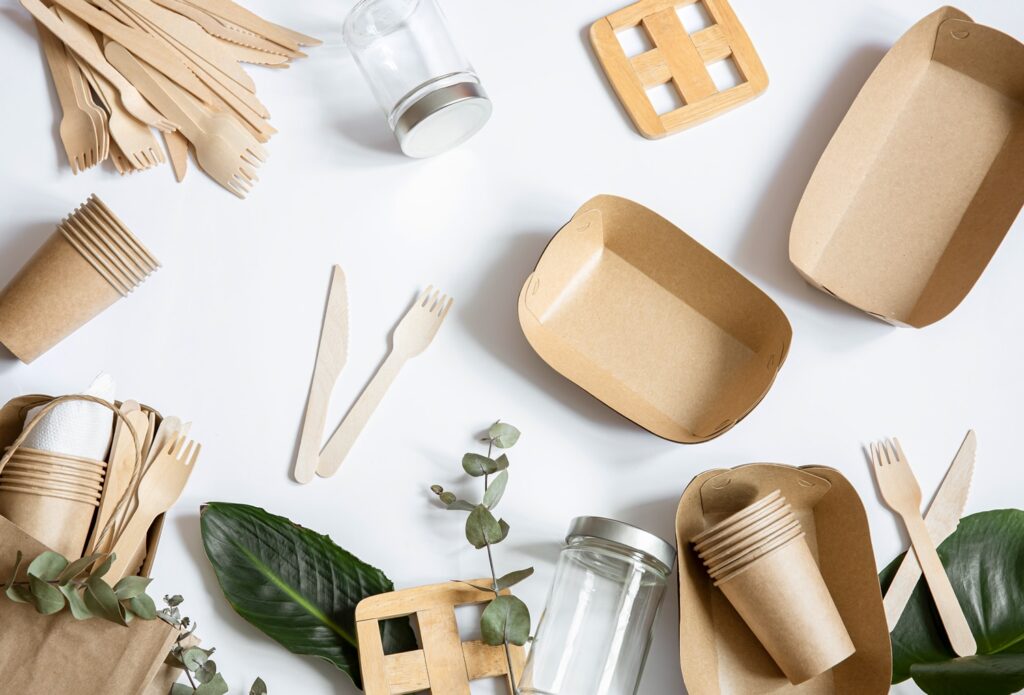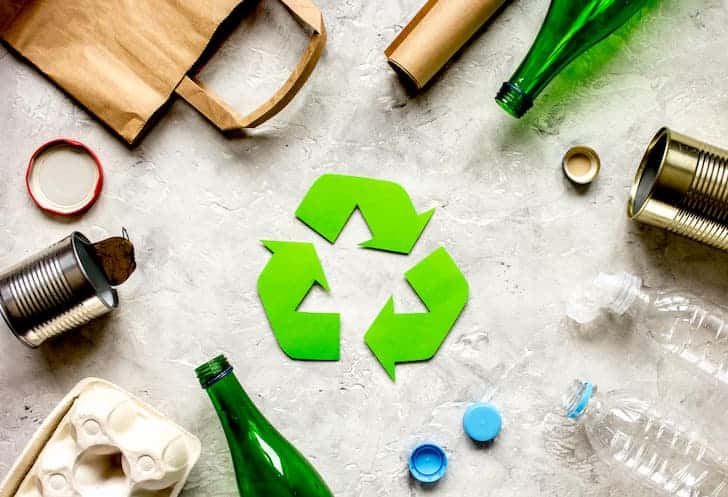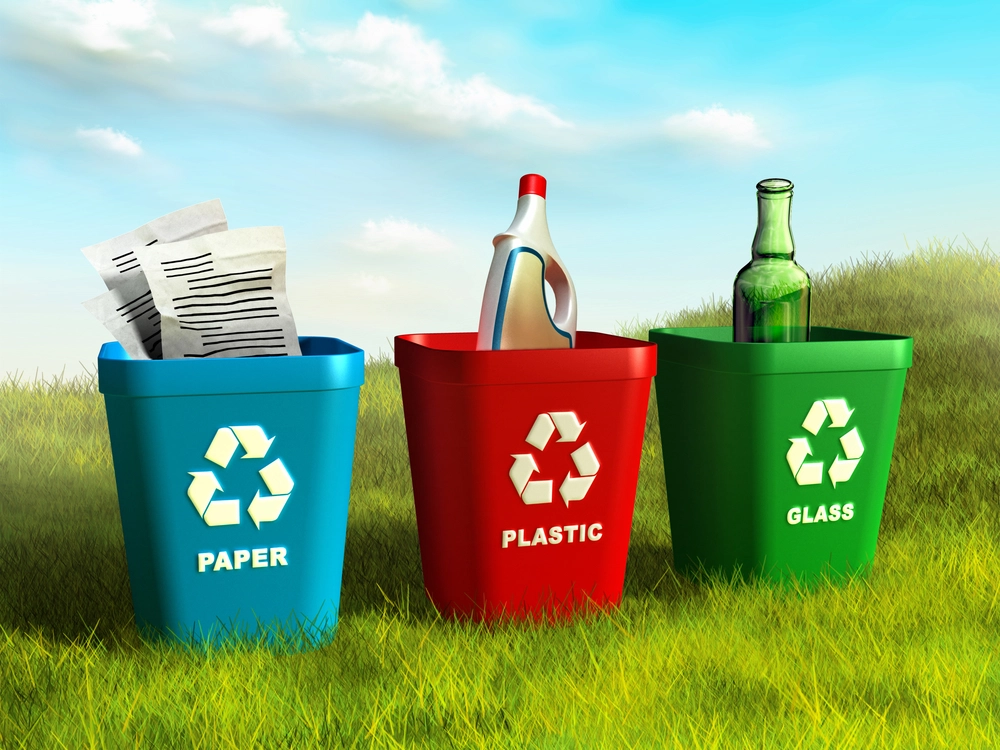With more than 8 million metric tons of plastic waste making its way to the ocean each year, we’ve only started realizing the magnitude of the problem we are causing for our planet. The excellent news is that sustainability is gaining global popularity, regardless of where you live. The concept of sustainability is permeating our daily lives, whether it’s through polite reminders to carry reusable bags to the local supermarket, compostable eating utensils, or items labeled as recyclable.
However, all of this raises questions about the best products for the environment. Does compostability actually differ from biodegradability? How about goods produced using recycled materials? The answers to these crucial queries have an effect on both our planet and, frequently, our health. In order to determine which is best for businesses, this blog post will examine the differences between compostable, biodegradable, and recyclable materials.
Biodegradable material

Source: pinterst.com
A substance is said to be biodegradable if it can be safely broken down by microorganisms, such as fungi and bacteria, and returned to nature. A product must totally decompose and transform into natural elements within a short time (typically one year or less) to be considered legitimately biodegradable.
The issue with this material is that it might take numerous years or even decades for many materials and items to biodegrade, including many plastics and steel products, which eventually rust and disintegrate.
It’s crucial to remember that conditions play a crucial role in biodegradability. The rate at which something can degrade is greatly influenced by factors such as temperature, as well as the presence of light, water, and oxygen. However, some products that degrade in compost heaps or in nature may not degrade in landfills because there is insufficient light, moisture, air, and bacteria there.
Compostable material
Compostable things, on the other hand, decompose into small pieces of carbon dioxide, inorganic compounds, water, and biomass in about 90 days. This rate is comparable to materials like leaves and paper that you might find in a backyard compost. Composting works due to billions of minuscule microbes that eat organic waste and turn it into compost. These materials have a variety of advantageous uses, such as fertilizing and enhancing soil health, and since they are already organic, they don’t leave behind any toxic residue.
Products that can be composted are typically produced using materials like corn, sugar cane, and bamboo. However, a “compostable” label on a product actually refers to its commercial compostability, so users cannot place it in their backyard compost piles.
The ideal combination of heat, moisture, and oxygen is present in a commercial composting facility for the breakdown of plant-based materials. Any compostable packaging material won’t break down without this optimum ecosystem. These items must be disposed of in the trash if there isn’t a composting facility nearby; otherwise, you must send them there.
Sadly, the majority of commercial composting establishments that are set up to deal with waste from compostable materials are unprepared to accept significant amounts of compostable plastics. Additionally, many commercial composting facilities won’t even accept biodegradable plastics since they view them as posing a risk of contamination. At the moment, composability labels are not regulated in the US. Occasionally, items marked “compostable” are petroleum-based goods that could degrade the compost’s quality. The good news is that some states are starting to enact new laws that establish standards for this kind of labeling.
Composting at home is a quick and enjoyable way of reducing yard and kitchen waste while producing nutrient-rich soil that will make your garden flourish. Additionally, a growing number of new products are being introduced to the market that are marked as being suitable for home composting.
Recyclable material

Source: pinterest:com
Recycling refers to the process of gathering and processing waste materials so they can be utilized again as new products. Although recycling cans, paper, plastic, and glass is a great idea and you’re probably already aware of it, let’s take a closer look at the idea. Recycling doesn’t always imply that one resource, such as a used plastic bag, will result in another of the same kind, like a new plastic bag. In contrast, the recycled item is typically used to make a completely new product.
Recycling still has a significant and widespread impact, even though it isn’t a completely efficient process.
For instance, recycled glass melts at temperatures lower than those required to make glass from raw materials, saving energy. Additionally, glass made from recycled glass reduces water and air pollution by 50% and 20%, respectively according to statistics from the World Wildlife Fund.
Metals, paper, cardboard, glass, plastics, batteries, and electronics are among the materials that can be recycled. However, not all materials can be continuously recycled. Plastic can only be downcycled once or twice before it becomes a material with a lower value. Paper may only be recycled about five times because every time it is recycled, the fibers become shorter and shorter. However, recycling glass and metal indefinitely preserves their quality and purity.

Source: pinterest:com
Which one is the best?
All of these options for dealing with packaging materials after their initial use are environmentally friendly. However, you might be asking which one is best for you and your packaging requirements. It is clear from our discussion above that all three options are favorable to the environment and that they each have advantages and disadvantages. GPA Global, expert in sustainable packaging solutions, works hard to produce packaging ethically and with the environment in mind while helping you find the right type of packaging for your business and product.
We have determined that compostable items are best for the environment. However, this solution may not be practical at the moment because industrial composting is not yet widely practiced. Only minimal usage is viable. Furthermore, we believe that many consumers will inadvertently recycle or toss a biodegradable item in curbside trash and recycling bins. Because biodegradable materials contaminate recycling streams and do not decompose in landfills that are devoid of oxygen and light, these packaging materials don’t appear to be the best option for sustainability. Currently, recyclable packaging is our best choice for sustainability. Although there isn’t a simple answer for sustainable manufacturing, everyone can still make a difference.



